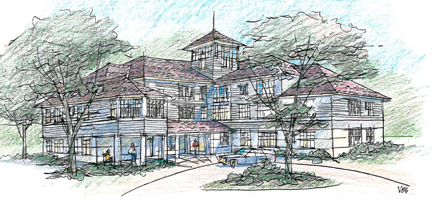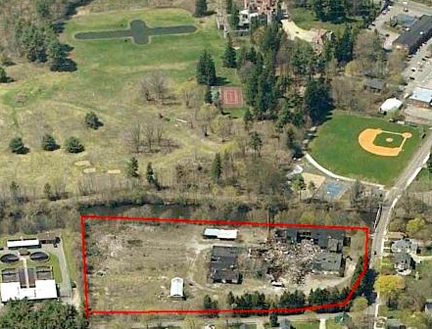By David Scribner
August 24, 2011
GREAT BARRINGTON – Next month, when crews begin to demolish the remaining buildings on the badly contaminated property at the foot of Bridge Street once owned by New England Log Homes, the first step will have been taken in an agonizingly slow process of restoring a prime downtown Great Barrington commercial site.
The environmental remediation that follows may then mark the first instance in Berkshire County where the state Department of Environmental Protection (DEP) has used bioremediation to remove dioxins and other toxic compounds from a brownfields site.
The DEP had previously determined that contamination from toxic chemicals used to treat the Log Home wood products was widespread throughout the property, and that the whole site needed to be remediated, either by capping or other means.
“The DEP is looking at experimental techniques, using bacteria and fungus – mushrooms – to remediate the open portions of the site,” explained Tim Geller, executive director of the Community Development Corporation of South Berkshire, “but the other areas will be capped by foundations, parking lots or fill. It’s what environmentalists call a temporary solution forever.”
The CDC acquired the 8-acre parcel in 2007, and since that time has been assembling the financing to develop the property. It will be anchored by affordable residential units, including a 30-unit continuing care facility that Geller describes as an “affordable Kimball Farms,” and a retail establishment that could possibly be an expanded Berkshire Co-op Marketplace.
“In the last four years, financing has determined the pace of development, and none of the sources we have obtained were available four years ago,” Geller said.
Associated Building Wreckers of Springfield has submitted a low bid of $613,000 for the demolition work, Geller noted. The work will begin in several weeks, and be completed by winter. The remediation will then commence.
At the same time, the CDC will secure contractual arrangements for the marketplace and residential development.
“The whole vision for Great Barrington is to maximize density in the center of town, and a retail center that supports local products,” he said. “When our project is done, and when the Riverschool development on the Searles site is completed there will be a couple hundred new housing units in the center of town rather than gobbling up farm land in the rural belt around Great Barrington.”
He also pointed out that the project is compatible with the goals of the Co-op Market to create a center that offers accessibility to the Housatonic River, and is a public gathering space.
“We don’t have such a place now, and the Log Homes site will have significant open space with access to the river,” he said.



